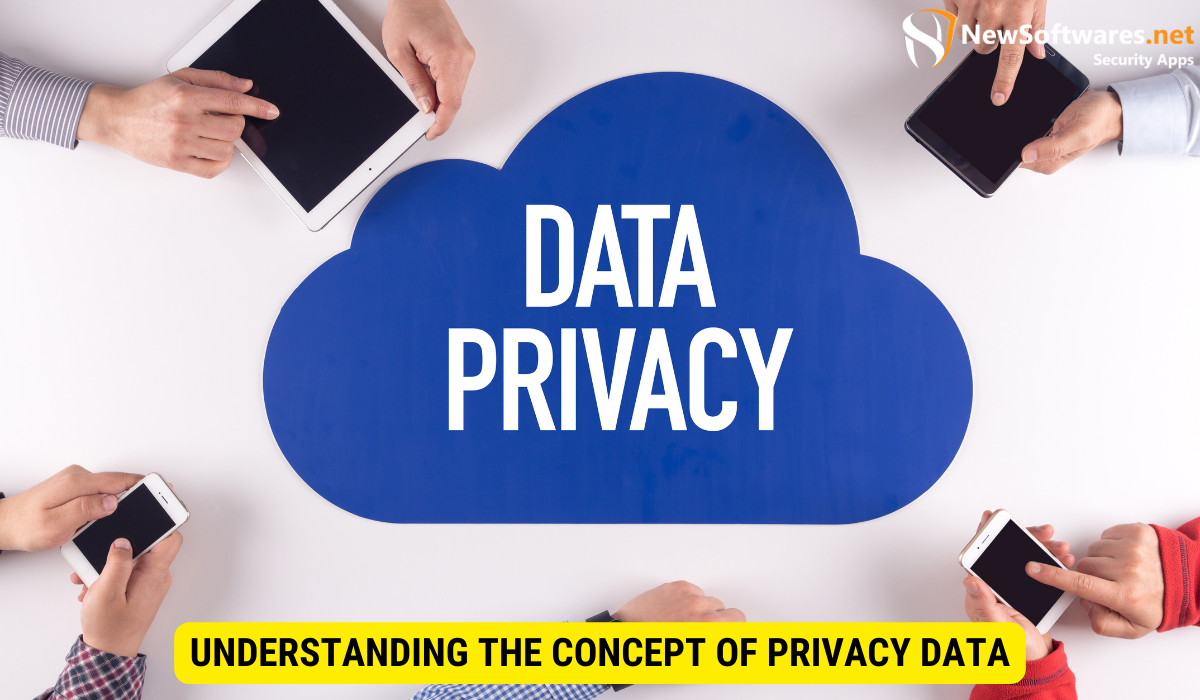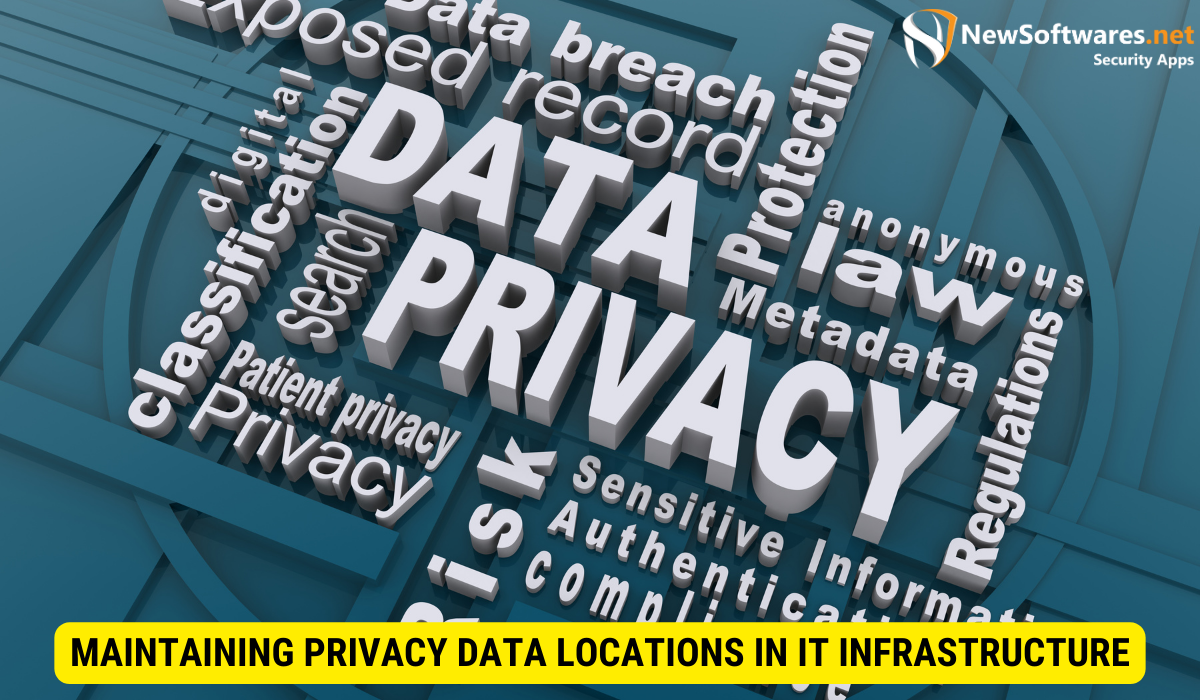Identifying where privacy data resides throughout your IT infrastructure is crucial for ensuring data security and compliance with regulations.” Both individuals and organizations handle a vast amount of sensitive data, such as personally identifiable information (PII), financial records, and proprietary business data. Therefore, understanding the concept of privacy data, recognizing its importance, overcoming challenges, and implementing strategies for locating it are essential steps to safeguarding data privacy and maintaining regulatory compliance. Let’s explore these aspects in detail.
Understanding the Concept of Privacy Data

Before delving into the importance of identifying privacy data locations, let’s clearly define what privacy data encompasses. Privacy data refers to any information that, if disclosed or misused, could harm individuals or organizations. This includes personally identifiable information, such as names, addresses, social security numbers, financial records, health records, and more. It also includes sensitive business data, trade secrets, or confidential information that, if leaked, could significantly impact an organization’s competitive advantage or reputation.
Privacy data is the lifeblood of both individuals and companies, and its unauthorized access or breach can lead to various consequences, ranging from identity theft and financial loss to legal liabilities and damaged brand reputation.
Defining Privacy Data
To gain a comprehensive understanding of privacy data, it is essential to identify the various types of information that fall into this category. This includes personally identifiable information (PII), financial data, health records, intellectual property, proprietary business information, and any sensitive data that requires protection. By defining privacy data, organizations can establish clear guidelines for its handling, storage, and access, paving the way for effective data protection measures.
Personally identifiable information (PII) encompasses a wide range of data points that can be used to identify an individual. This includes not only the obvious ones like names, addresses, and social security numbers, but also less obvious ones like IP addresses, device identifiers, and biometric data. Financial data includes banking information, credit card details, and transaction history. Health records contain sensitive information about an individual’s medical history, treatments, and diagnoses.
Intellectual property refers to creations of the mind, such as inventions, literary and artistic works, designs, symbols, and names used in commerce. Proprietary business information includes trade secrets, customer lists, marketing strategies, and confidential financial data. These types of information are crucial for maintaining a competitive advantage in the market and must be protected from unauthorized access or disclosure.
The Role of Privacy Data in IT Infrastructure
Privacy data plays a critical role within an organization’s IT infrastructure. It is often scattered across multiple systems, databases, and applications, making it challenging to track and secure. Understanding the role of privacy data within your IT infrastructure is crucial for implementing the necessary safeguards to protect it. This includes employing encryption, access controls, secure storage solutions, and monitoring tools to prevent unauthorized access, data breaches, or insider threats.
Encryption is a fundamental technique used to protect privacy data. It involves converting the data into an unreadable format using cryptographic algorithms. Only authorized individuals with the decryption key can access and decipher the information. Access controls, such as strong passwords, multi-factor authentication, and role-based permissions, ensure that only authorized personnel can access privacy data.
Secure storage solutions, such as encrypted databases and cloud storage with robust security measures, provide a safe environment for storing privacy data. Regular backups and disaster recovery plans are essential to ensure data availability and integrity in case of system failures or natural disasters.
Monitoring tools, including intrusion detection systems and security information and event management (SIEM) solutions, help organizations detect and respond to potential security incidents or breaches. These tools provide real-time alerts, log analysis, and incident investigation capabilities, enabling proactive security measures to protect privacy data.
By understanding the role of privacy data in IT infrastructure and implementing appropriate security measures, organizations can safeguard sensitive information, maintain regulatory compliance, and protect their reputation and the trust of their customers.
The Importance of Identifying Privacy Data Locations
Identifying privacy data locations is vital for several reasons, including enhancing data security and ensuring compliance with data protection regulations. Let’s explore the key benefits in detail:
Enhancing Data Security
By identifying where privacy data resides within your IT infrastructure, you can implement specific security measures to protect it effectively. This includes employing encryption techniques, establishing access controls and permissions, implementing firewalls, intrusion detection systems, and other security mechanisms. Understanding where privacy data resides enables organizations to focus their security efforts on high-risk areas, minimizing vulnerabilities and potential breaches.
Compliance with Data Protection Regulations
Compliance with data protection regulations, such as the General Data Protection Regulation (GDPR), the California Consumer Privacy Act (CCPA), or industry-specific regulations, is vital in today’s digital landscape. Identifying privacy data locations assists in understanding which regulations apply to your data and enables you to adopt appropriate security measures and privacy policies to comply with them. Non-compliance can result in severe penalties, legal actions, and reputational damage.
Challenges in Locating Privacy Data in IT Infrastructure
Identifying privacy data locations can be challenging due to the complex nature of IT infrastructure and the rapid evolution of data storage technologies. Let’s explore these challenges in more detail:
Complexity of IT Infrastructure
Modern IT infrastructures are complex, comprising various systems, servers, databases, cloud services, and interconnected applications. Privacy data can be stored in different formats, locations, and repositories, making it challenging to track and map its whereabouts accurately. Additionally, data retention policies, data archiving, and backups further complicate the task of locating privacy data.
Rapid Evolution of Data Storage Technologies
The rapid evolution of data storage technologies, such as cloud computing, distributed storage systems, and virtualization, introduces new challenges in locating privacy data. Data can be replicated, shared among multiple locations, or stored in a decentralized manner, making it difficult to identify the primary data sources and associated risks. Staying updated with emerging technologies and their implications on privacy data storage is crucial for effectively locating and protecting sensitive information.
Strategies for Identifying Privacy Data Locations
To overcome the challenges in locating privacy data, organizations can adopt specific strategies. Let’s explore two key strategies:
Implementing Data Mapping
Data mapping involves identifying the flow of data within an organization, understanding how data moves through various systems, databases, and applications, and documenting the process. This allows organizations to identify the entry points, storage locations, and transmission channels of privacy data. By implementing data mapping techniques, organizations gain visibility into their data ecosystem, enabling them to make informed decisions about data protection and securing any vulnerable areas.
Utilizing Privacy Data Management Tools
Privacy data management tools are available to automate the process of identifying and mapping privacy data locations. These tools can scan networks, databases, and systems, detect sensitive information, and generate reports outlining the locations and associated risks. Privacy data management tools streamline the process of locating privacy data in complex IT infrastructures, saving time and resources while improving data security.
Maintaining Privacy Data Locations in IT Infrastructure

Identifying privacy data locations is not a one-time task but an ongoing process. Organizations need to establish measures to maintain the accuracy and relevancy of privacy data locations within their IT infrastructure. Here are two important steps:
Regular Audits and Updates
Regular audits of privacy data locations are vital to ensure that the identified locations remain accurate and relevant. As IT infrastructure evolves, data is moved, new systems are introduced, and security measures are updated. Conducting periodic audits, reviewing data maps, and updating privacy data locations accordingly ensures that organizations can adapt to the changing landscape and maintain effective data protection.
Training and Awareness Among IT Staff
IT staff members play a crucial role in locating and securing privacy data within the infrastructure. Providing regular training and awareness programs to IT professionals helps them understand the importance of privacy data, its associated risks, and the steps to locate and protect it effectively. By investing in their knowledge and skills, organizations can cultivate a strong data protection culture and reduce the risk of data breaches or mishandling.
Key Takeaways
- Identifying privacy data locations within your IT infrastructure is essential for data security and compliance.
- Privacy data includes personally identifiable information and sensitive business data.
- Understanding privacy data’s role in IT infrastructure helps implement necessary safeguards.
- Identifying privacy data locations enhances data security and compliance with regulations.
- Challenges include the complexity of IT infrastructure and rapid evolution of data storage technologies.
- Data mapping and privacy data management tools are strategies for identifying privacy data locations.
- Maintaining accurate privacy data locations requires regular audits and training for IT staff.
FAQs
Q: Why is it crucial to identify privacy data locations in an IT infrastructure?
A: Identifying privacy data locations is crucial because it enables organizations to implement targeted security measures, protect sensitive data, and comply with data protection regulations.
Q: What challenges arise when locating privacy data within IT infrastructure?
A: Challenges in locating privacy data include the complexity of IT infrastructure, the rapid evolution of data storage technologies, and the difficulty of tracking data across multiple systems and repositories.
Q: How can organizations identify privacy data locations effectively?
A: Organizations can identify privacy data locations by implementing data mapping techniques, utilizing privacy data management tools, conducting regular audits, and providing training and awareness programs for IT staff.
Q: Why is maintaining privacy data locations an ongoing process?
A: IT infrastructure evolves over time, with data being moved, systems being updated, and security measures changing. Regular audits and updates, along with ongoing training for IT staff, ensure that privacy data locations remain accurate and relevant.
Conclusion
In conclusion, identifying where privacy data resides throughout your IT infrastructure is a crucial step for ensuring data security, compliance with regulations, and maintaining trust with your customers and stakeholders. By understanding the concept of privacy data, recognizing its importance, overcoming challenges, and implementing strategies for locating it, organizations can effectively protect sensitive information and mitigate potential risks. Stay proactive in identifying privacy data locations, maintain their accuracy, and foster a culture of data privacy within your organization to safeguard sensitive information in today’s digital landscape.
